Related Research Articles

The Real Teatro di San Carlo, as originally named by the Bourbon monarchy but today known simply as the Teatro (di) San Carlo, is an opera house in Naples, Italy, connected to the Royal Palace and adjacent to the Piazza del Plebiscito. It is the oldest continuously active venue for opera in the world, having opened in 1737, decades before either Milan's La Scala or Venice's La Fenice.

Davide Perez was an Italian opera composer born in Naples of Italian parents, and later resident court composer at Lisbon from 1752. He staged three operas on librettos of Metastasio at Lisbon with huge success in 1753, 1754, and 1755. Following the 1755 Lisbon earthquake, Perez turned from opera mostly to church music.
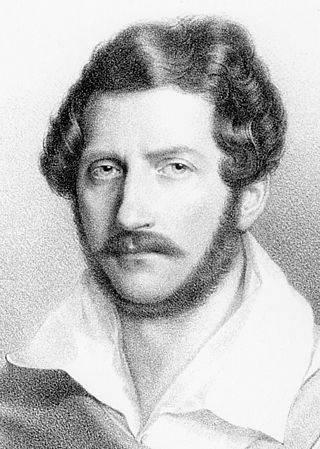
Pia de' Tolomei is a tragedia lirica in two acts by Gaetano Donizetti. Salvadore Cammarano wrote the Italian libretto after Bartolomeo Sestini's verse novella Pia de' Tolomei, which was based on Canto V, vv. 130–136 from Dante's narrative poem The Divine Comedy part 2: Purgatorio. It premiered on 18 February 1837 at the Teatro Apollo in Venice.

Gemma di Vergy is an 1834 tragedia lirica in two acts by Gaetano Donizetti from a libretto by Giovanni Emanuele Bidera. It is based on the tragedy Charles VII chez ses grands vassaux(Charles VII and His Chief Vassals) (1831) by Alexandre Dumas père, which was later to become the subject of the opera The Saracen by the Russian composer César Cui.
Theatres for diverse musical and dramatic presentations began to open in Naples, Italy, in the mid-16th century as part of the general Spanish cultural and political expansion into the kingdom of Naples, which had just become a vicerealm of Spain. None of the early theaters still function as such, having been replaced by later facilities from the mid-18th century onwards. Neapolitan theatres first built in the 16th and 17th centuries include:
Giovanni Antonio Medrano was the "Major Regius Praefectus Mathematicis Regni Neapolitani", chief engineer of the kingdom, architect, brigadier, and teacher of Charles III of Spain and his brothers the infantes. Giovanni was born in Sciacca in the Kingdom of Sicily. Giovanni designed the Obelisk of Bitonto, the Palace of Capodimonte and the Teatro di San Carlo in Italy for Charles III of Spain. Medrano’s career is particularly studied, from his stay in Seville as a teacher for the royal princes, and his influence on Prince Charles’ architectural taste, to his projects in the Kingdom of Naples and the royal palace at Capodimonte.

Caroline Unger, alternatively known as Karoline, Carolina, and Carlotta, was an Austro-Hungarian contralto.

The Galli–Bibiena family, or Galli da Bibiena, was a family of Italian artists of the 17th and 18th centuries, including:

Angelo Maria Amorevoli was a leading Italian tenor in Baroque opera.

Eugenia Tadolini was an Italian operatic soprano. Admired for the beauty of her voice and stage presence, she was one of Donizetti's favourite singers. During her career she created over 20 leading roles, including the title roles in Donizetti's Linda di Chamounix and Maria di Rohan and Verdi's Alzira. She was born in Forlì and studied music there and in Bologna before making her debut in Florence in 1828. She sang in all of Italy's leading opera houses, as well as in Paris, Vienna, and London before retiring from the stage in 1852. She spent her remaining years first in Naples, where she had been the Teatro San Carlo's reigning prima donna for many years, and then in Paris, where she died of typhoid fever at the age of 63. From 1827 to 1834, she was married to the Italian composer and singing teacher, Giovanni Tadolini.
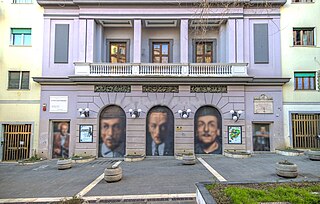
Teatro San Ferdinando is a theatre in Naples, Italy. It is named after King Ferdinand I of Naples. Located near Ponte Nuovo, it is to the southeast of the Teatro Totò in the western part of the neighborhood of Arenaccia. Built in the late eighteenth century, the seats are arranged in four box tiers, and the pit. It is most associated with Eduardo De Filippo and the productions of the 1950s under his direction. Closed in the 1980s and reopened in 2007, the San Fernando is managed by the Teatro Stabile of Naples.
Francesco Tortoli was an Italian scenographer, active in Naples from 1808 at the city's principal theatres—Teatro San Carlo, Teatro del Fondo and Teatro dei Fiorentini. He was the creator of sets for numerous productions including those for the world premieres of Rossini's La gazzetta, Otello, Armida, Mosè in Egitto, and La donna del lago. Tortoli was born in Florence and died in Naples of cholera at the age of 35.

Sebastiano Biancardi, known by the pseudonym Domenico Lalli, was an Italian poet and librettist. Amongst the many libretti he produced, largely for the opera houses of Venice, were those for Vivaldi's Ottone in villa and Alessandro Scarlatti's Tigrane. A member of the Accademia degli Arcadi, he also wrote under his arcadian name "Ortanio". Lalli was born and raised in Naples as the adopted son of Fulvio Caracciolo but fled the city after being implicated in a bank fraud. After two years wandering about Italy in the company of Emanuele d'Astorga, he settled in Venice in 1710 and worked as the "house poet" of the Grimani family's theatres for the rest of his career. In addition to his stage works, Lalli published several volumes of poetry and a collection of biographies of the kings of Naples. He died in Venice at the age of 62.
Giuseppe Balducci was an Italian composer, primarily of operas. Born in Iesi, he spent most of his career in Naples and was one of the originators of the "salon opera" genre, the forerunner of chamber opera.

The Teatro Nuovo is a theatre located on Via Montecalvario in the Quartieri Spagnoli district of Naples. The original theatre was an opera house designed by Domenico Antonio Vaccaro. Completed in 1724, it was also known as the Teatro Nuovo sopra Toledo and the Teatro Nuovo de Montecalvario. The theatre specialised in the opera buffa genre and saw the world premieres of hundreds of operas in its heyday. These included fifteen of Cimarosa's operas and seven of Donizetti's. The present theatre is the third to have been erected on the site following its destruction by fire in 1861 and again in 1935.

Nicola De Giosa was an Italian composer and conductor active in Naples. He composed numerous operas, the most successful of which, Don Checco and Napoli di carnevale, were in the Neapolitan opera buffa genre. His other works included sacred music and art songs. His songs were particularly popular, bringing him fame as a salon composer both in Italy and abroad. De Giosa died in Bari, the city of his birth, at the age of 66.
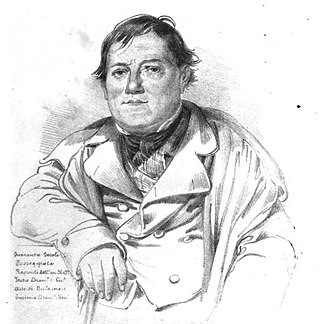
Giovanni Emanuele Bidera was an Italian writer.
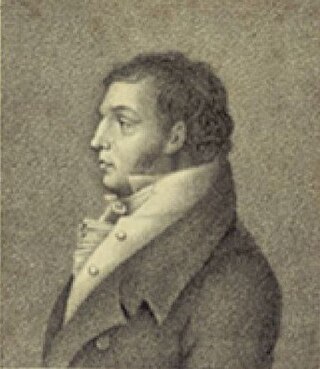
Eliodoro Bianchi was an Italian operatic tenor and later a prominent singing teacher. Born in Cividate al Piano and trained in Naples under Giacomo Tritto, he made his stage debut in 1793. Amongst the many roles, he created during the course of his 40-year career were Baldassare in Ciro in Babilonia and the King of Sweden in Eduardo e Cristina, both of which were composed by Rossini expressly for Bianchi's voice. He retired from the stage in 1835 and spent his later years in Palazzolo sull'Oglio, where he died at the age of 75.
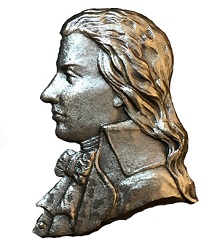
Luigi Capotorti was an Italian composer of both sacred and secular music. He was the maestro di cappella of several Neapolitan churches; the composer of ten operas, five of which premiered at the Teatro San Carlo in Naples; and a teacher of composition and singing whose students included Stefano Pavesi and Saverio Mercadante. Born in Molfetta, he studied violin and composition at the Conservatorio di Sant'Onofrio in Naples and spent his entire career in that city. In his later years, Capotorti retired to San Severo, where he died at the age of 75.
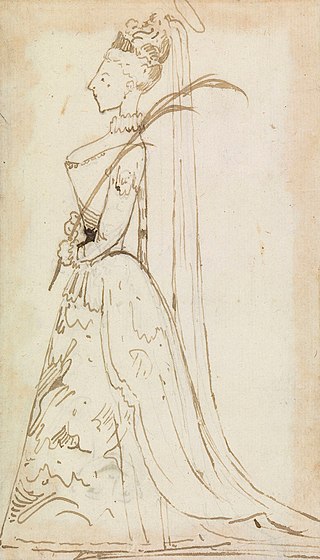
Maria Giustina Turcotti, sometimes shortened to Giustina Turcotti, was an Italian vocalist who had a career in opera. Sources vary in describing her voice type, some identifying her as a soprano and others a mezzo-soprano. She performed in opera houses in Italy from 1717 through 1746, and then toured Europe as a member of Pietro Mingotti's opera troupe from 1746 to 1750. She was a resident singer at the Bayreuth court opera; a position she held from 1750 until 1758 and then again from 1760 through 1763. After this period no record of the singer has been found.
References
- ↑ Dumas, Book 1, Chapter 4
- ↑ Guido Pannain, Cronache Sancarliane p. 7, in de Filippis, pp. 6 - 34
- ↑ A. Howard Cady, Caserta: The Italian Versailles, The American magazine, Volume 40, page 154
Sources
- Dumas, Alexandre, The Bourbons of Naples, pub?
- de Filippis, Felice (ed.) (1951), Il Teatro di S. Carlo. Naples: Ente Autonomo del Teatro di San Carlo.
- Holmes, William Holmes (1993), Opera Observed. Chicago: University of Chicago Press, p. 98